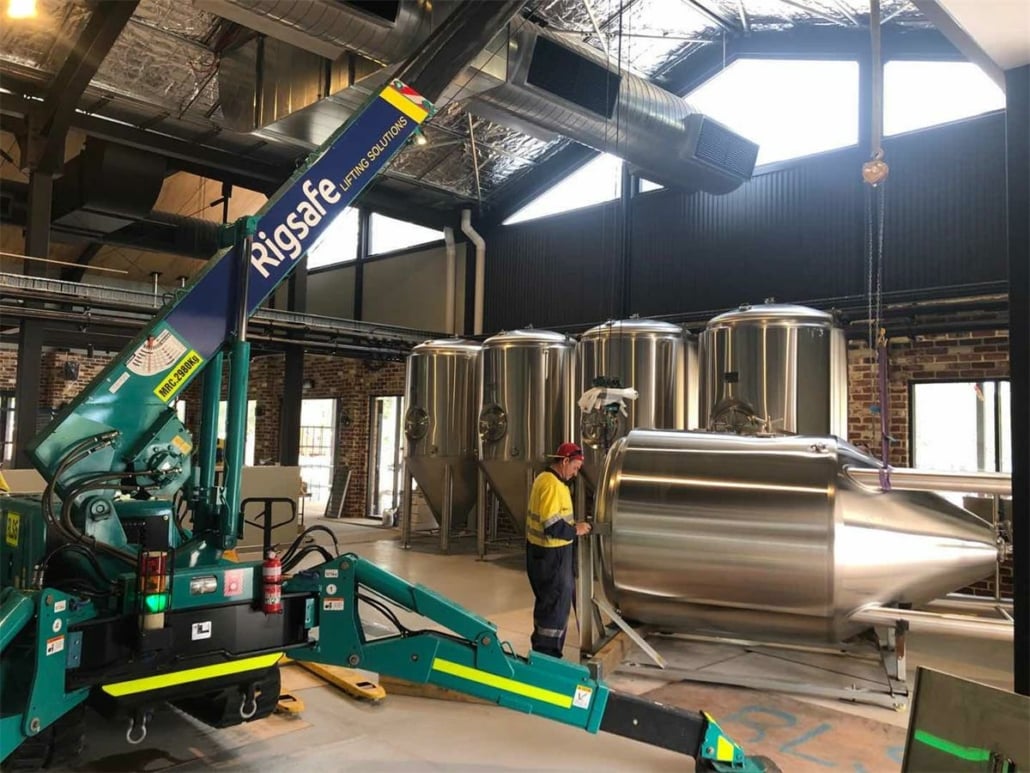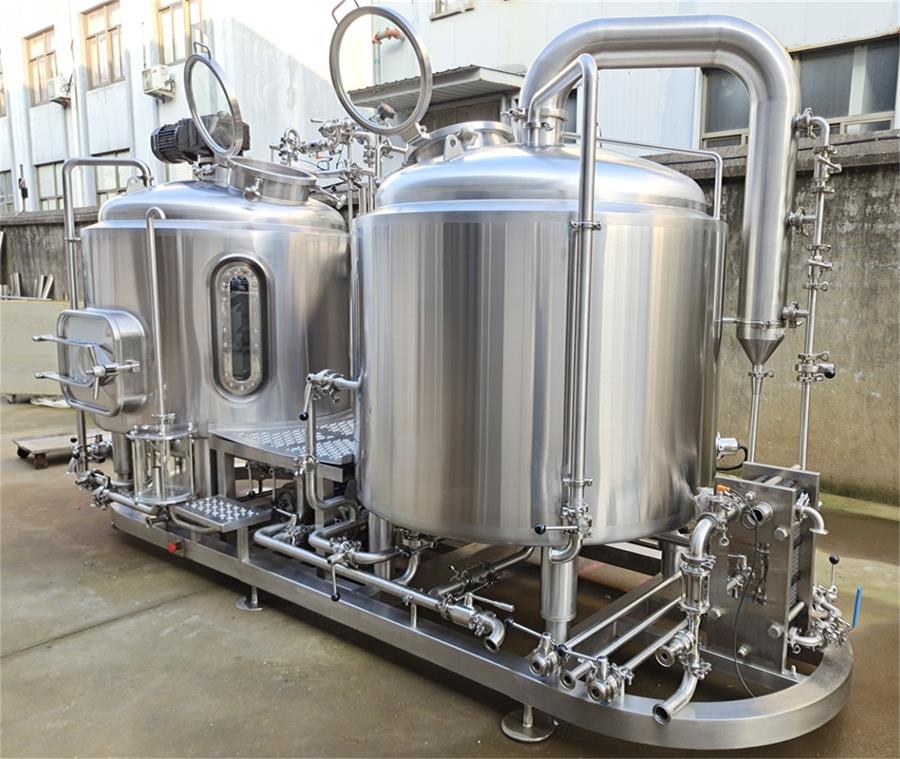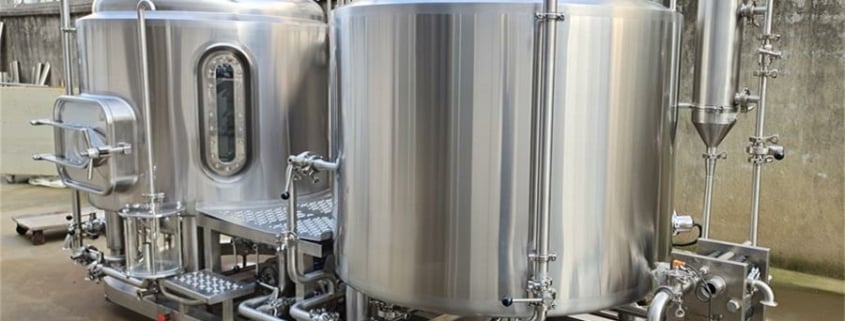Understanding Commercial Microbrewery Equipment
Commercial microbreweries have seen explosive growth in recent years, driven by the booming craft beer industry. Setting up a microbrewery is an exciting venture, but it requires a solid understanding of the equipment involved. This article provides an in-depth guide on commercial microbrewery equipment, focusing on everything from the brewing process to equipment selection, layout design, installation, and maintenance.
Overview of Commercial Microbrewery Equipment
Starting a microbrewery involves more than just passion for craft beer; it requires a substantial investment in the right equipment. This equipment is the backbone of your brewing operation, impacting the quality, consistency, and volume of your beer. Understanding the types of equipment, their functions, and the brewing process is crucial for anyone looking to enter the commercial brewing space.
Equipment Guide for Commercial Microbreweries
The heart of any microbrewery lies in its equipment. Let’s delve into the various types of equipment needed to run a successful commercial microbrewery.
Brewing Equipment
- Mash Tun: The mash tun is where the magic begins. It’s where malted barley and water are mixed and heated, converting starches into fermentable sugars. The design and material of your mash tun can affect the efficiency of this process.
- Lauter Tun: This vessel is used to separate the wort from the spent grains. A well-designed lauter tun with a false bottom ensures optimal wort extraction.
- Brew Kettle/Whirlpool: The brew kettle is where the wort is boiled, and hops are added. The whirlpool function helps to separate the trub (solid particles) from the wort after boiling.
- Fermenters: Fermentation tanks are where the wort is transformed into beer through the action of yeast. Different types of fermenters (e.g., conical fermenters) offer varying degrees of control over the fermentation process.
- Bright Tanks: These tanks are used for maturing, clarifying, and carbonating the beer before it is packaged. They play a crucial role in the final quality of the beer.
- Heat Exchangers: These devices are used to cool down the wort quickly after boiling, preparing it for fermentation. Efficient heat exchangers save time and energy.
- Glycol Chillers: Glycol systems are essential for maintaining precise temperature control during fermentation and storage. They ensure the beer develops the desired flavors and aromas.
- Pumps and Valves: These components move liquids between tanks and are critical for the smooth operation of the brewery. High-quality, sanitary-grade pumps and valves are essential for maintaining the integrity of your beer.
- Control Systems: Modern breweries use automated control systems to manage temperature, pressure, and other brewing parameters. These systems can greatly enhance efficiency and consistency.
- Cleaning and Sanitizing Equipment: Cleanliness is non-negotiable in brewing. A robust cleaning and sanitizing system, including CIP (Clean-in-Place) systems, is essential for maintaining hygiene and preventing contamination.

Types of Commercial Microbrewery Equipment
| Equipment Type | Description |
|---|---|
| Mash Tun | Vessel for mixing malted barley and water, converting starches into fermentable sugars. Design and materials influence efficiency. |
| Lauter Tun | Separates wort from spent grains, crucial for optimal wort extraction. |
| Brew Kettle/Whirlpool | Boils wort and adds hops; whirlpool function helps separate solid particles. |
| Fermenters | Where wort is transformed into beer through fermentation. Conical fermenters offer better control. |
| Bright Tanks | Used for maturing, clarifying, and carbonating beer before packaging. |
| Heat Exchangers | Cools down wort quickly after boiling, crucial for preparing for fermentation. |
| Glycol Chillers | Maintains precise temperature control during fermentation and storage. |
| Pumps and Valves | Move liquids between tanks, essential for smooth brewery operation. High-quality pumps and valves are critical. |
| Control Systems | Automated systems managing temperature, pressure, and other parameters enhance efficiency and consistency. |
| Cleaning and Sanitizing | Includes CIP systems essential for maintaining cleanliness and preventing contamination. |
The Brewing Process Explained
Brewing beer is an art and a science. Each stage of the brewing process plays a critical role in determining the final product’s flavor, aroma, and texture.
Mashing
Mashing is the first step in brewing, where crushed grains are mixed with hot water in the mash tun. The goal is to convert the starches in the grains into fermentable sugars. The temperature and duration of the mash are crucial factors that influence the body and sweetness of the final beer.
Lautering
After mashing, the mash is transferred to the lauter tun. Here, the liquid wort is separated from the solid grain husks. The wort is then sparged, or rinsed, to extract as much sugar as possible from the grains. The efficiency of this process can significantly affect the beer’s final alcohol content.
Boiling
The wort is then moved to the brew kettle, where it is boiled, usually for about an hour. During boiling, hops are added to impart bitterness, flavor, and aroma to the beer. The boil also sterilizes the wort and evaporates undesirable volatile compounds.
Whirlpooling
Post-boil, the wort undergoes whirlpooling, where it is rapidly circulated in the kettle to separate the trub from the clear wort. This step is vital for ensuring a clean beer with no unwanted particulates.
Cooling
The hot wort is rapidly cooled down using a heat exchanger. This step is crucial to prevent contamination and to bring the wort to a temperature where yeast can be safely pitched without being killed.
Fermentation
Cooled wort is transferred to fermenters, where yeast is added. The yeast consumes the sugars, producing alcohol, carbon dioxide, and various flavor compounds. The fermentation process can last from a few days to several weeks, depending on the beer style.
Maturation
After primary fermentation, the beer is conditioned or matured in bright tanks. This process allows the flavors to meld and any harsh characteristics to mellow out. During this stage, the beer is also carbonated.
Packaging
Finally, the beer is packaged in bottles, cans, or kegs. Proper packaging is essential to preserve the beer’s freshness and prevent spoilage.
Designing Your Brewery: Capacity, Space, and Layout Considerations
When planning your microbrewery, it’s essential to consider the capacity, available space, and layout. Each of these factors will influence your operational efficiency and the quality of your beer.
| Consideration | Details |
|---|---|
| Capacity | The capacity of your brewing equipment should align with your production goals. Microbreweries typically range from 3 to 15 barrels per batch. |
| Space | Adequate space is needed not only for the equipment but also for movement, storage, and future expansion. Consider the flow of materials and staff. |
| Design | The design should facilitate smooth workflow and comply with health and safety regulations. Consider access to utilities like water, electricity, and drainage. |
| Layout | An efficient layout minimizes unnecessary movement and reduces the risk of contamination. Place related equipment close together, and ensure easy access for cleaning. |
| Customization | Customized equipment can address specific needs such as space constraints or unique brewing processes. Tailor your layout to optimize your brewing process. |
Commercial Microbrewery Equipment Suppliers and Price Ranges
Choosing the right supplier for your microbrewery equipment is crucial. The supplier’s reputation, the quality of the equipment, and the support services offered are all important considerations.
| Supplier | Price Range | Key Features |
|---|---|---|
| BrewTech Inc. | $50,000 – $500,000 | Known for high-quality stainless steel equipment with extensive customization options. Offers full installation support. |
| Alpha Brewing Operations | $100,000 – $800,000 | Specializes in turnkey systems with a strong emphasis on automation and efficiency. |
| PSS SVIDNÍK | $70,000 – $600,000 | European-based supplier with a reputation for durable and reliable brewing systems. |
| JVNW, Inc. | $80,000 – $1,000,000 | Offers a wide range of brewing systems, including modular designs that can be expanded as the brewery grows. |
| Ss Brewtech | $40,000 – $400,000 | Popular among small to mid-sized breweries for their innovative and user-friendly equipment designs. |
Installation, Operation, and Maintenance of Microbrewery Equipment
Proper installation, operation, and maintenance are critical to the longevity and performance of your microbrewery equipment.
| Aspect | Details |
|---|---|
| Installation | Professional installation ensures that all equipment is set up correctly and safely. This includes proper connection to utilities and calibration of control systems. |
| Operation | Operators should be trained to use all equipment correctly. Understanding the control systems and safety protocols is essential to prevent accidents and maintain consistency. |
| Maintenance | Regular maintenance is necessary to prevent breakdowns and extend |
the life of the equipment. This includes routine cleaning, inspection, and replacement of worn parts. |
Choosing a Microbrewery Equipment Supplier: Key Considerations
Selecting the right supplier involves more than just comparing prices. Consider the following factors when making your decision:
| Factor | Details |
|---|---|
| Reputation | Look for suppliers with a strong track record in the industry. Read reviews, ask for references, and visit other breweries if possible. |
| Support Services | Does the supplier offer installation support, training, and after-sales service? Good support can save time and money in the long run. |
| Customization Options | Can the equipment be tailored to your specific needs? Customization can optimize your brewing process and space utilization. |
| Quality and Durability | Invest in equipment that is built to last. High-quality materials and construction will pay off in terms of reliability and longevity. |
| Lead Times | Consider the supplier’s lead time. Delays in equipment delivery can push back your brewery’s opening. |
| Cost | While budget is important, don’t compromise on quality for the sake of cost. A well-balanced investment in equipment can yield better results over time. |
Comparing Pros and Cons of Different Commercial Microbrewery Equipment Options
Each type of brewing equipment comes with its own set of advantages and limitations. Understanding these can help you make more informed decisions.
| Equipment | Advantages | Limitations |
|---|---|---|
| Mash Tun | High-efficiency models improve sugar extraction. Durable materials like stainless steel resist corrosion. | Larger units may require more space. Higher-end models can be expensive. |
| Lauter Tun | Effective wort separation improves beer clarity. Automated systems reduce manual labor. | Requires careful cleaning to prevent blockages. Some systems can be costly and complex to operate. |
| Brew Kettle/Whirlpool | Combination units save space. Enhanced temperature control improves flavor consistency. | High energy consumption. May require additional ventilation to manage steam. |
| Fermenters | Conical designs facilitate yeast harvesting and cleaning. Temperature control systems enhance quality. | Can be expensive, especially for larger capacities. Requires precise maintenance to avoid contamination. |
| Bright Tanks | Essential for high-quality carbonation and clarification. Durable construction increases lifespan. | Takes up significant space in the brewery. Requires careful monitoring of pressure and temperature. |
| Heat Exchangers | Rapid cooling reduces the risk of contamination. Efficient models lower energy costs. | Initial cost can be high. Requires regular maintenance to ensure efficiency. |
| Glycol Chillers | Precise temperature control is vital for consistent fermentation. Energy-efficient models save costs. | High upfront costs and regular maintenance required. Potential for glycol leaks, which can be costly to repair. |
| Pumps and Valves | Essential for fluid movement; high-quality models reduce the risk of leaks. | Poor quality can lead to contamination and equipment failure. Regular maintenance required. |
| Control Systems | Automation improves efficiency and consistency. Reduces the need for manual intervention. | Complex systems can be costly and may require specialized training to operate effectively. |

FAQs
| Question | Answer |
|---|---|
| What is the best equipment for a startup microbrewery? | It depends on your budget, space, and production goals. Start with essential items like a mash tun, lauter tun, brew kettle, and fermenters. Expand as needed. |
| How much space do I need for a microbrewery? | The space required depends on your production capacity and equipment size. A 3-5 barrel system might need around 1,500 to 2,000 square feet. |
| How do I maintain my microbrewery equipment? | Regular cleaning and sanitizing are critical. Follow the manufacturer’s maintenance schedule for inspections and part replacements to prevent breakdowns. |
| Can I customize my brewing equipment? | Yes, many suppliers offer customization options to fit your specific brewing process and space constraints. |
| What is the typical lead time for brewing equipment? | Lead times can range from a few weeks to several months, depending on the supplier and level of customization. Plan accordingly to avoid delays in opening. |
| Is it better to buy new or used brewing equipment? | New equipment ensures the latest technology and longer warranties. Used equipment can be cost-effective but may require more maintenance and have a shorter lifespan. |
| What are the key factors to consider when choosing a supplier? | Consider reputation, support services, customization options, quality and durability, lead times, and cost when selecting a supplier. |
Conclusion
Setting up a commercial microbrewery is a complex process that requires careful planning and investment in the right equipment. By understanding the different types of brewing equipment, their functions, and the importance of proper installation, operation, and maintenance, you can ensure your microbrewery operates smoothly and produces high-quality beer. Choosing the right supplier and designing an efficient layout are also crucial to the success of your brewery. Whether you’re starting small or aiming to scale up, this guide provides the essential information you need to make informed decisions and craft the best beer possible.













